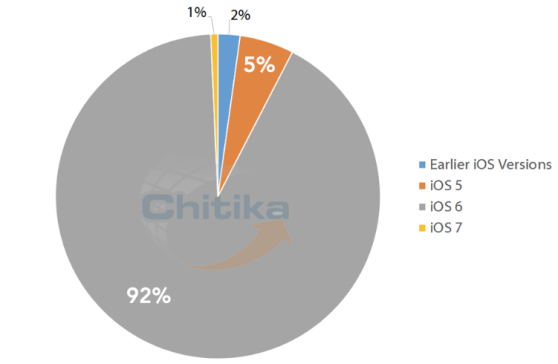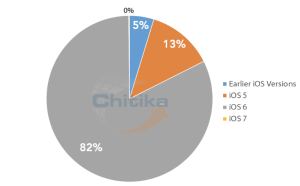The day before iOS 7 will almost certainly launch to the public, Apple’s new operating system for iPhone, iPad, and iPod Touch already has 1 percent of iOS web traffic.
I guess there’s a lot of “developers” out there.
According to ad network Chitika, 92 percent of iOS internet traffic is from Apple’s current standard operating system, iOS 6. A little 5 percent slice is from iOS 5, and 2 percent is from even earlier versions — likely on older devices that cannot receive updates for more advanced OSes. But 1 percent is on Apple’s newest system, iOS 7, which is theoretically only available to card-carrying, dues-paying members of Apple’s mobile developer program.
June 5th: The AI Audit in NYC
Join us next week in NYC to engage with top executive leaders, delving into strategies for auditing AI models to ensure fairness, optimal performance, and ethical compliance across diverse organizations. Secure your attendance for this exclusive invite-only event.
Apple gives developers early access to iOS 7 for testing, bugfixing, and compatibility checking, and I’ve been using and enjoying it since before June, when I called it “the essence of less.”
Clearly, however, more than your typical developer audience has gotten their hands on this new operating system.
Apple users typically are quick adopters of new operating systems, creating a much more unified mobile ecosystem than Android, which has traditionally has significantly more fragmentation of devices and operating system versions than iOS — although that is diminishing.
When iOS 7 actually does become available, it should quickly overtake iOS 6 as the most popular iPhone operating system.
One interesting note from Chitika: While iPhone users are already adopting iOS 7, they haven’t been updating their iPads at anywhere near the same rate. Less than 1 percent of iPad web traffic is from iOS 7-upgraded devices. That matches my personal experience, where I’ve updated my iPhone to iOS 7 but left my iPad, which is less of a continual-use device, on iOS 6.



